
The cover image is generated by Recraft. Click the original link to try this workflow.
Current Observations
Recently, while developing the AI workflow product “Vector Context,” I observed an interesting phenomenon. Although I have detailed the methods for using AI and provided hands-on guidance for writing prompts, very few colleagues have truly integrated AI into their daily work. Most colleagues only experiment with it a few times a month, and some feel that “using AI is not as fast as doing it myself.”
This phenomenon is something I often hear when communicating with other companies. Everyone talks about AI and acknowledges its importance, but very few have turned AI into a work partner. Many remain in the experimental phase: they hear that the latest AI is good, register an account to try it out, ask a few questions, find it interesting, and then gradually forget about it in a browser tab.
Why is this happening?
The Dilemma of Passive AI
Initially, I thought it was because AI wasn’t powerful enough. However, after a year of in-depth research and development of AI products, I gradually realized that the issue might lie elsewhere: the vast majority of current AI products operate on a “passive” interaction model.
What is “passive”? Simply put, AI is always waiting for the user to initiate a conversation or action. You have to actively open the ChatGPT page, think about what questions to ask, and organize your language to send a request before AI starts working. In Notion, when writing an article, you must actively press the “/” key and select AI-related functions for it to assist you. It’s like having an assistant who waits for you to give orders; if you don’t speak up, they will remain quietly in the corner.
But which type of assistant do you prefer? One that you have to instruct for every task, or one that is perceptive and anticipates your needs, preparing various things in advance?
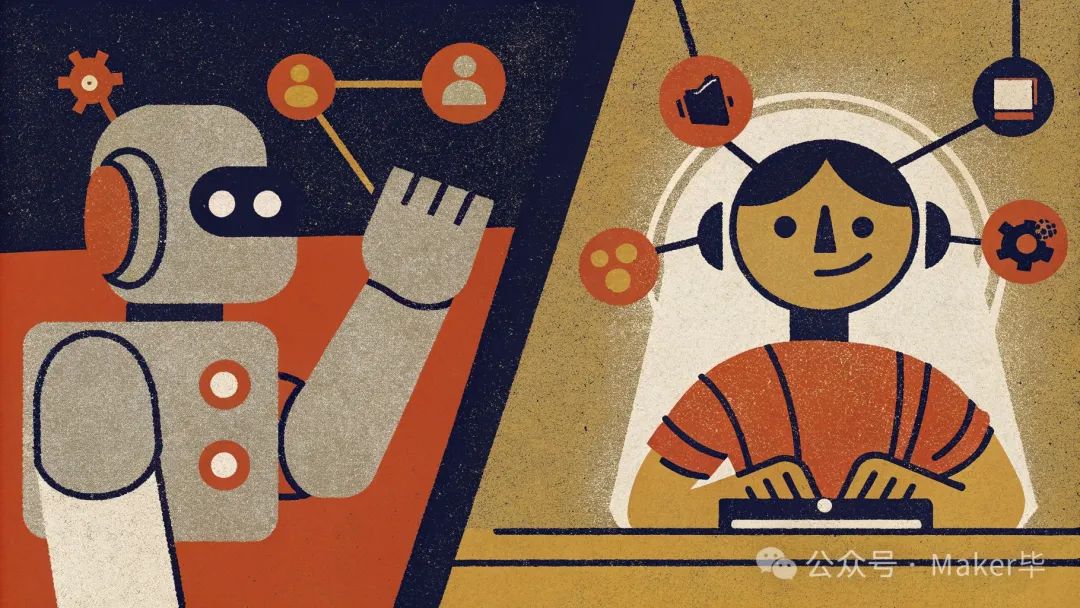
Generated in the style of a 2D art poster using Recraft. Click the original link to try this workflow.
Clearly, the latter is preferred. But why do most current AI products adopt a passive interaction model?
There is a very practical reason: Token costs. At the beginning of 2023, the cost of invoking AI models was still relatively high; a typical conversation could cost several dollars. If AI were to continuously analyze and process in the background, the expenses would be considerable. Therefore, product designs had to adopt this passive approach, waiting for users to initiate requests before invoking AI.
However, the situation is beginning to change. AI companies are fiercely competing, and while model performance is improving, the price of tokens is continuously decreasing. Just as the emergence of Arduino lowered the barriers to hardware development, enabling the concept of “everyone can be a maker,” lower-cost AI models are creating conditions for the widespread adoption of “active AI”.
| Model | Year |
Input Price |
Output Price |
|---|---|---|---|
| gpt-4-32k | 2023 | $60 | $120 |
| gpt-4o | 2024 | $2.5 | $10 |
| DeepSeek | 2024 | $0.14 | $0.28 |
This means that this year, you can obtain an AI model that is even more powerful than last year’s top performer (ranked by lmarena) at just 0.2% of the cost (DeepSeek compared to gpt-4-32k). The cost has undergone a significant change, but what about the interaction paradigms of products? Currently, most AI applications we see are still primarily chatbot types. The advantage of chatbot applications is that users have virtually no learning curve; they can use it just like everyday chatting, making it easy to get started.
However, no learning curve does not mean no cognitive cost.
Do you remember your first time using Excel? You might have thought it was just a tool for creating tables. Until one day, you saw someone using Excel, pulling down lightly, and the entire column of data was automatically filled in according to a pattern. You suddenly realized: so that’s how Excel can be used!

This is a typical cognitive cost issue: even if Excel’s intelligent fill feature is very powerful, if the user is unaware of its existence or does not think to use it while working, that feature may as well not exist for them.
Current AI products are similar. I often see scenarios like this:
A colleague is collecting and organizing information, searching through a vast number of pages via search engines, editing and rewriting painfully. Even though we have introduced various AI tools to everyone, they completely forget that they can ask AI for help. When I remind them, “Why not try using AI?” they suddenly realize: “Oh right, I forgot I could use AI!”
Another colleague is sorting product images, manually categorizing and tagging them across several dimensions. I asked him: “Why not use AI for classification?” He replied: “Huh? AI can understand images?”
For customer service colleagues, I specifically designed workflows that can query tickets, access professional knowledge, and optimize response language. However, we observed from the backend that usage frequency gradually decreased after a few days. Upon inquiry, many customer service colleagues felt that it was still faster to answer customer questions directly themselves.
This reflects the reality for most people when using AI:
-
Either they completely forget that AI is an option.
-
Or they don’t know what AI can do.
-
Or they feel that using AI is more cumbersome than doing it directly.
Even if they know they can use AI, they still face a series of cognitive burdens:
-
They have to open a new webpage or software.
-
They have to think about how to describe their needs.
-
They worry about whether AI will misunderstand.
-
They need to check if AI’s output is reliable.
-
They have to copy and paste the results back into their work interface.
Each of these steps seems simple, but combined, they lead people to think, “Forget it, I’ll just do it myself.”
It’s like having an assistant in another office; every time you need their help, you have to:
-
Walk to their office.
-
Explain in detail what you need.
-
Check their work after they finish to see if it meets your requirements.
-
If it’s not right, you have to explain again.
-
Finally, you have to bring their work back to your office.
Over time, unless necessary, who would actively seek out this assistant for help?
So when we say, “Most people struggle to utilize AI,” it’s not a matter of technical ability; rather, it’s that the current design of AI products places unnecessary cognitive burdens on users. Users need to constantly remember, “I can use AI,” need to actively switch to another tool, and need to learn how to communicate with AI. These are all stumbling blocks preventing AI from truly integrating into daily workflows.
So, how should we design to enable users to seamlessly utilize AI?
Transitioning from Passive to Active Paradigms
Let me first share an excellent example of product design: Cursor AI. Cursor AI is an AI-assisted code editor.
The scenario of AI-assisted programming has existed for several years, with basic operations including auto-completion and AI-generated code dialogues.
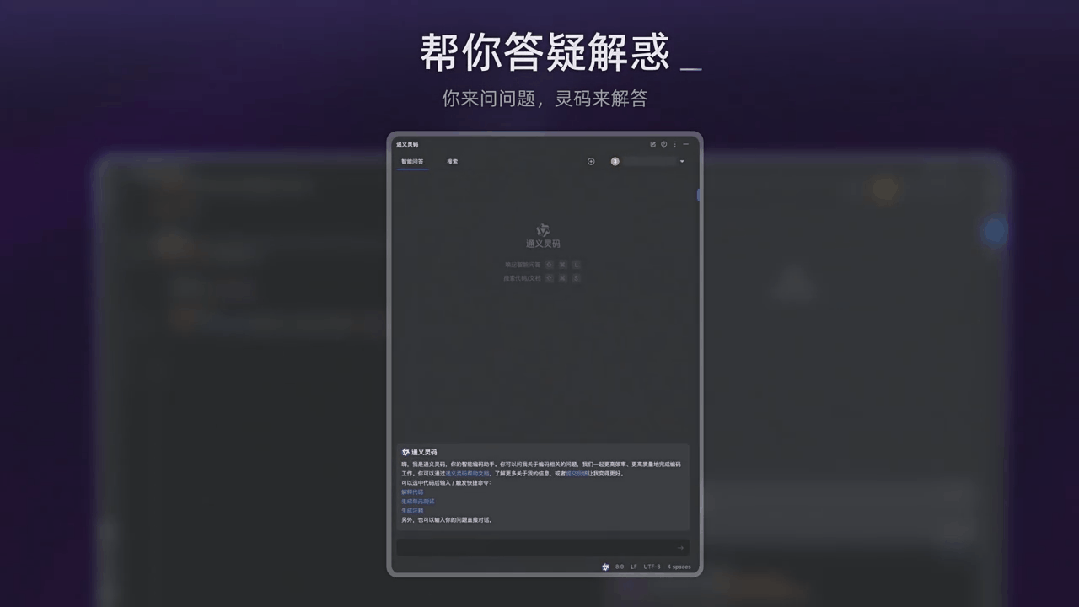
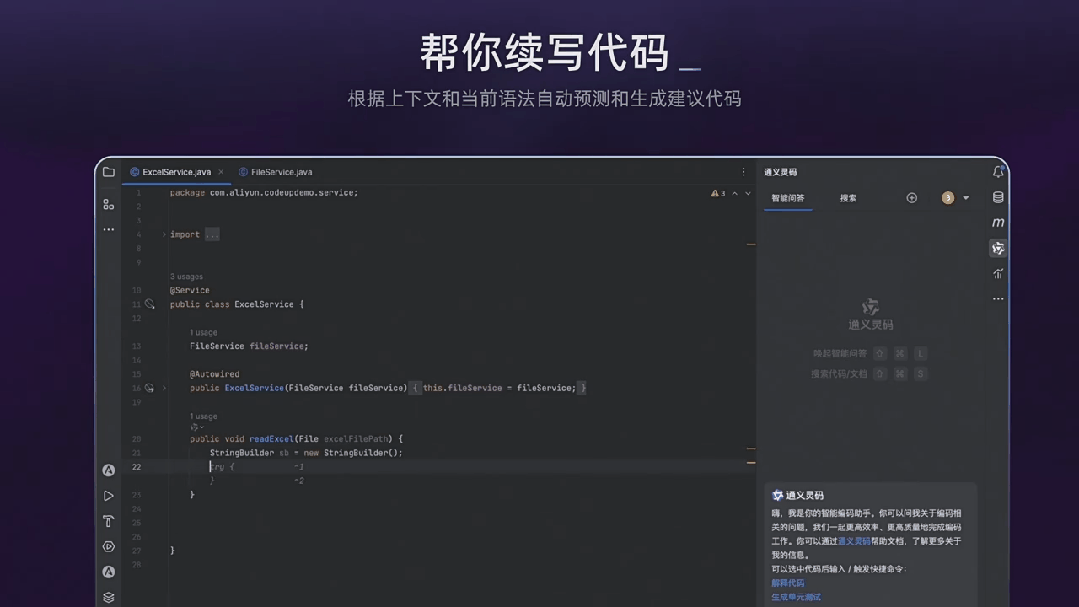
How does Cursor AI, as a new entrant, stand out in these basic operations and gain favor from so many developers?
Firstly, for the auto-completion feature, Cursor goes a step further; it not only predicts the code that needs to be completed but also anticipates which line (or lines) you might need to edit next, automatically moving the cursor to that line, saving you the time of moving the cursor with your mouse or keyboard. Don’t underestimate this little bit of time; for developers, it allows us to continuously press the Tab key to achieve auto-completion -> move to the next position -> continue auto-completion. Over time, this can save a lot of time. Cursor calls this Just hit tab.
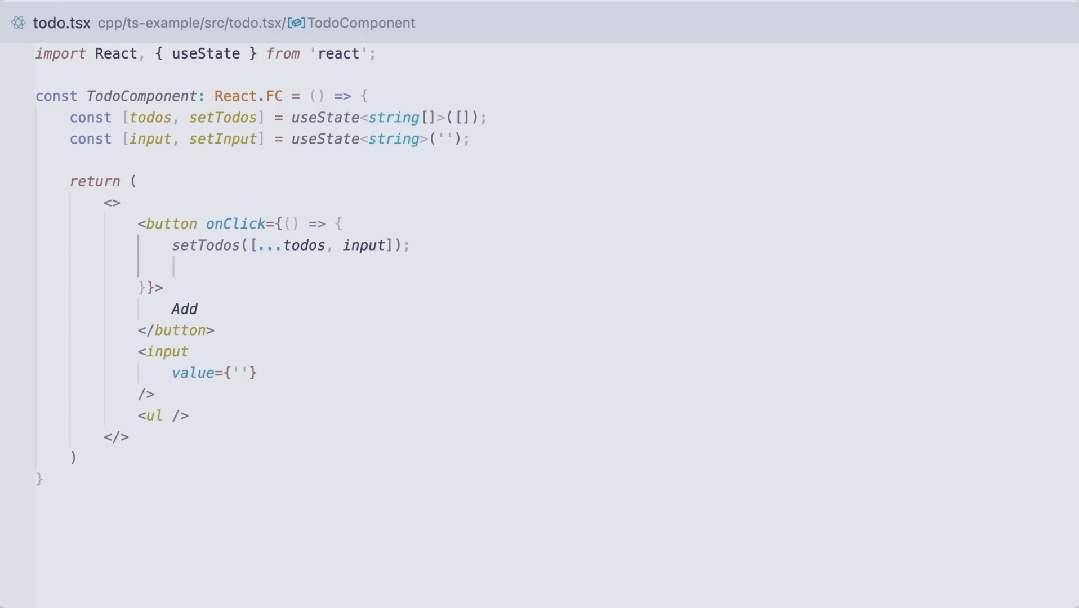
As for the standard feature of code generation, Cursor also takes it a step further; not only does it generate code, but they have also specifically trained a proprietary model solely for handling how to insert AI-generated code into the user’s files. Users’ code can be lengthy, and after analysis, AI may find that the user’s new requirements only need modifications in two places, which could be far apart. If AI cannot automatically help users insert the modified code into the specified locations, users would have to copy and paste manually. Cursor saves users from this step by automatically finding where the new code should be inserted/modified. Cursor calls this Instant Apply, and they have written a blog post introducing this proprietary model.
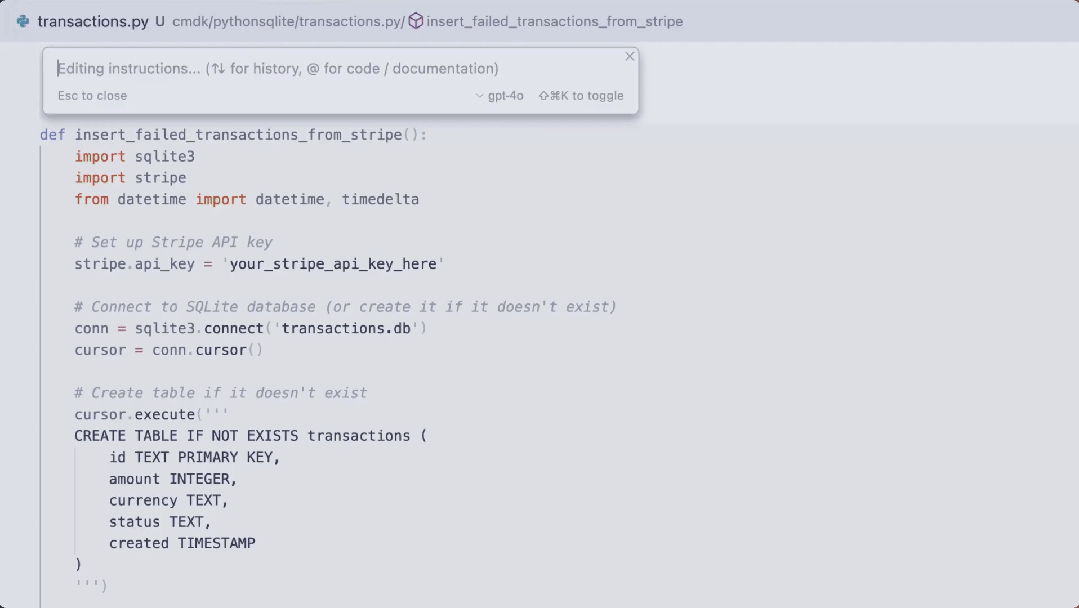
Additionally, Cursor has a feature called Shadow Workspace. It’s not an intuitive feature, but it can greatly enhance the development experience, sometimes making one exclaim: “Wow, how did you know to change this!” In simple terms, this feature opens an invisible workspace, allowing AI to continuously observe and understand the user’s code in the background. Note that this is not just analyzing the single code file the user is currently editing, but analyzing the entire project. You can imagine it as having an expert sitting next to you while you code, who not only knows what code you are editing but also understands the structure of your entire project, and will prompt you when necessary: “This should be written differently.” This is an excellent example of an “active” AI assistant, not waiting for me to ask before responding, but working alongside me while I work, providing prompts when necessary.
So, how can we transform existing tools according to the design of “active” AI?
For example, in the previously mentioned Excel intelligent fill example, to use the intelligent fill feature, you need to select the content and then pull down. This operation is not intuitive for a user who only knows basic Excel operations; they might not even think of this feature. However, if we change our approach: AI continuously observes the user’s actions in the background, and when AI notices that the user has filled in the first row with student number 20240101 and the second row with 20240102, it can immediately recognize this pattern. Instead of waiting for the user to “discover” the intelligent fill feature, it would be better to proactively display a semi-transparent preview in the subsequent cells, allowing the user to confirm if it’s correct or continue inputting, without interrupting their workflow.
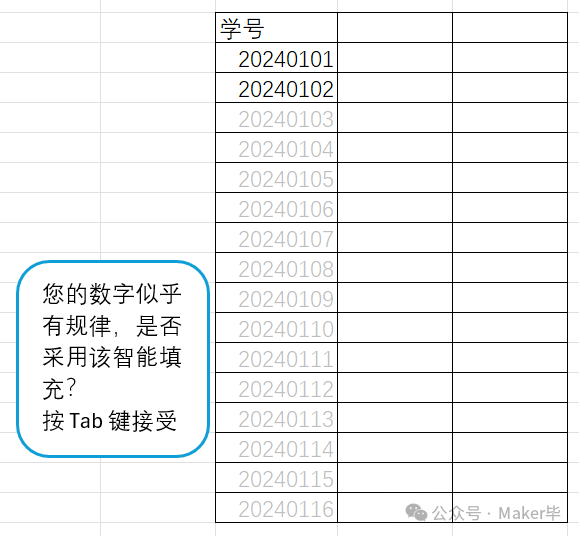
The same logic can be applied to other parts of the table. For instance, if I input the “Name” column and the “Gender” column, can AI proactively suggest that I add columns for “Date of Birth,” “Contact Number,” and “Home Address”? Or if I input a column of date data, can AI suggest that I generate a chart to visualize this data? A truly intelligent AI should act like an experienced craftsman, providing useful suggestions while I work on the table, rather than arriving late when I seek help.
Similarly, an intelligent browser assistant could automatically query unfamiliar keywords/professional terms in the background based on my background knowledge, organizing a mind map and relevant resource links for me. When I see the corresponding professional terms, it could automatically present prompts for me.
When the interaction paradigm of AI applications shifts from “passive” to “active,” users will no longer need to constantly remind themselves to use AI tools to assist them. Active AI tools will continuously reinforce users’ cognitive understanding, gradually helping them accept the concept of AI assistance.
Product Design Considerations During the Transition Period
Active AI will undoubtedly be the design trend for future AI products. However, during the period when most users have not yet established the mindset of using AI assistance, taking too big a step may lead to products being well-received but not widely adopted, with more people just coming to try it out.
So, how can we design AI products during this somewhat awkward transition period? Here are some of my humble opinions.
First, let’s look at the current situation during this transition period:
-
The cost of large language models has dropped to a relatively low price, and the technical costs of active AI are manageable.
-
Users’ understanding of AI is still at the stage of “knowing”; they have not formed the mindset of using AI daily.
Therefore, I believe that AI products during the transition period can consider integrating active AI into existing products and tools that users are familiar with, enhancing users’ cognitive understanding without interrupting their current workflows. This way, users can gradually learn about AI’s capabilities and boundaries, paving the way for the next phase.
An old example comes from the cash registers at 7-11 convenience stores. To collect customer data for analysis while minimizing the cognitive burden on cashiers, 7-11 designed quick buttons on the cash register to record customer gender and age. Cashiers can simply make a judgment and press the button, eliminating the need to record customer details in a separate notebook after the customer leaves. This design does not interrupt the existing workflow and is designed to fit the original context, making it easy for cashiers to use.

Therefore, rather than designing entirely new AI products, it may be more suitable to consider what existing products and tools can be improved, using active AI to assist users.
Design Principles for Active AI
What should be noted in the design of active AI?
Product Design Principles
-
Do not disrupt the user’s workflow. Being proactive does not mean being intrusive; AI’s suggestions should be like sticky notes, always visible and easily ignored. Active AI should not overshadow the user experience, appearing in paths that hinder normal product usage.
-
Accurately grasp timing. Just as an excellent assistant knows when to proactively report work and when to remain silent, AI must learn to provide help at the right time and place.
-
Provide clear control options. Allow users to easily adjust the level of proactivity of AI; some users may prefer more proactive suggestions, while others may prefer a quieter working environment.
-
Establish a robust feedback mechanism. One advantage of active AI is that you can clearly see from the backend whether users accepted the suggestions provided by AI, as accepting AI suggestions requires a behavioral action for confirmation. This behavioral data should not be overlooked, as it can provide significant insights for product optimization.
-
Continuously learn user preferences. By recording users’ acceptance of AI suggestions, continuously optimize the frequency and content of suggestions to provide truly personalized services.
-
Retain decision-making power with users. Until the illusions of LLMs are dispelled, AI cannot fully replace human decision-making. Most products should retain decision-making power with users, allowing them to take over and make final judgments at any time.
-
Handle privacy information carefully. With active AI, unlike passive AI, users cannot intuitively see which information is being processed by AI. Therefore, it is necessary to inform users in advance about which information will be read by AI to achieve the effects of active AI.
Technical Implementation Points
-
Strictly control costs. Due to the design of active AI, costs may significantly increase compared to passive AI, so cost control must be strict in design. There are many methods for cost control, such as:
-
Automatically matching different large language models based on task difficulty. There is no need to always pursue the most powerful model; specific simple tasks can be handled by smaller models.
-
Adjusting the structure of prompts to utilize many caching features provided by large model vendors. For public parts, try to extract them into a single dialogue round to maximize cache hits. For example, in the case of DeepSeek, the cost of hitting the cache is only 0.1 RMB per million tokens.
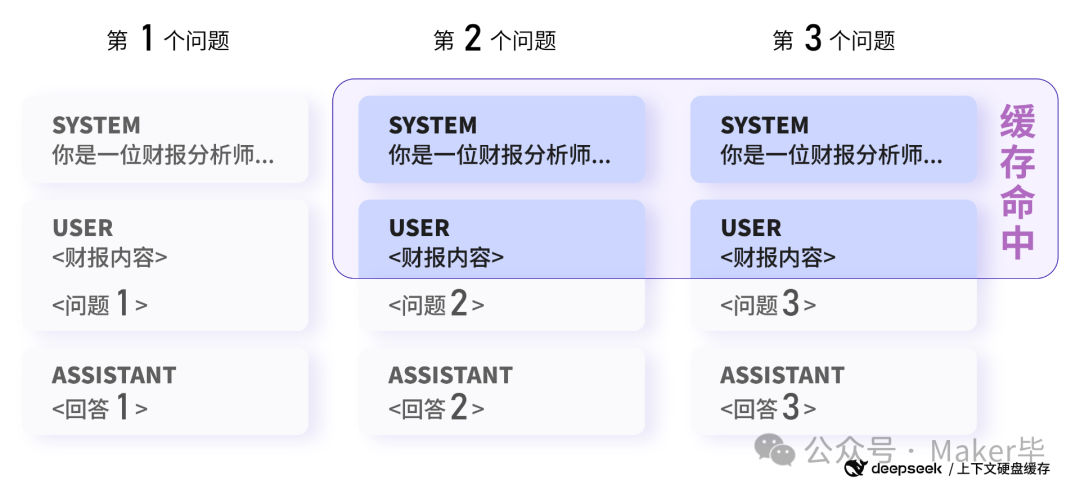
-
Asynchronous processing mechanism. Active AI needs to continuously run analysis in the background. To avoid affecting the user’s normal operation experience, an asynchronous processing mechanism must be adopted. Background tasks can not only provide active AI suggestions but also continuously process more user data for pre-analysis to provide more accurate suggestions to the large model at the right time. For example, tasks such as document segmentation, formatting, summarization, keyword extraction, and terminology organization.
-
Layered architecture design
-
Sensing layer: Real-time capture of user behavior and context.
-
Analysis layer: Understanding user intent and needs.
-
Decision layer: Determining whether to proactively provide help.
-
Execution layer: Generating and displaying suggestions.
-
Reasonable context length. Design the content that needs to be included in the prompts reasonably. While it may seem simple to dump all conceivable content into the prompt, it leads to high costs and increased initial token latency. Therefore, the second point mentioned above can come into play here; some non-critical information can rely on previous summaries as substitutes, reducing length without losing information.
Attempts with Vector Context
The Vector Context I developed is a no-code workflow platform, which also faces the issue of user learning barriers. Therefore, I am currently trying to add proactive prompts on the workflow canvas interface, suggesting to users that they might consider using a certain node or connection, along with reasons for the suggestions to facilitate user understanding. I hope to lower the design barriers for users through this approach.
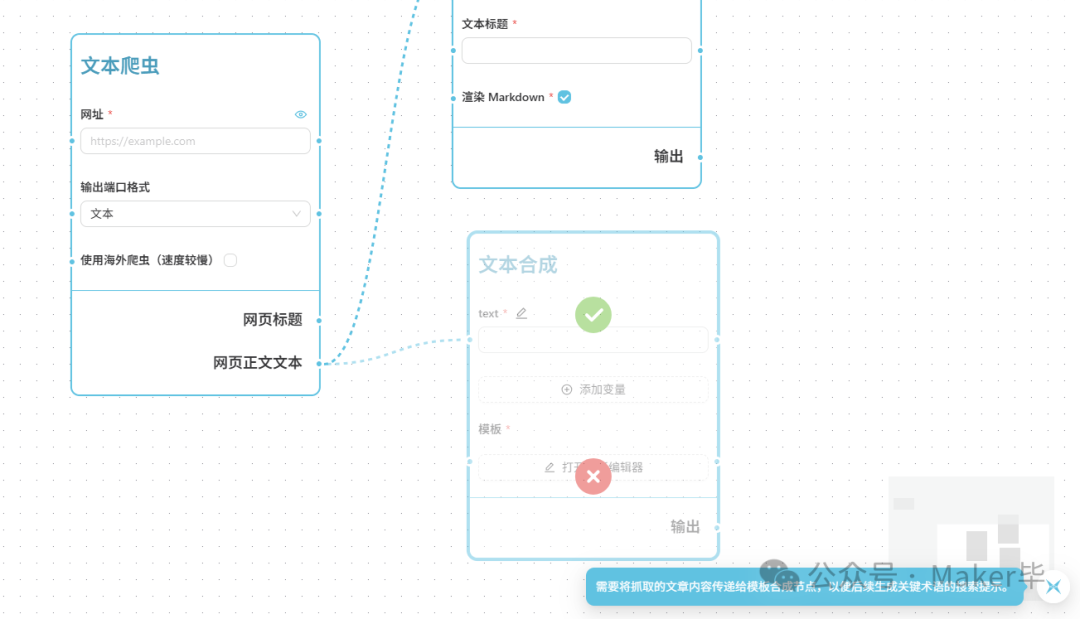
In terms of workflow usage, although we have developed browser plugins and PC software, users still need to actively invoke them. Following the active AI design paradigm discussed in this article, I hope to achieve a future where AI can automatically determine when to invoke which workflow to assist users during their browsing or computer usage, making Vector Context a versatile and intelligent active AI assistant.
Final Thoughts
Looking back at the entire development of computing, every major paradigm shift has been accompanied by innovations in interaction methods. From command lines to graphical interfaces, from mouse and keyboard operations to touch screens, each change has brought computers closer to users.
Now, AI is ushering in a new wave of revolution. However, we must consider not only how to make AI more powerful but also how to make it more human-centric. Just like a newcomer to a company filled with fresh knowledge, their abilities may be strong, but if they do not know how to be proactive and provide help at the right time, their value will never be fully realized.
The transition from passive to active AI is not just an improvement in product design; it is a significant step towards AI becoming an “assistant” rather than just a “tool.” When AI begins to actively observe, think, and suggest, we move closer to a true “intelligent assistant.”
I remember when I founded the Tsinghua Maker Space, I proposed the slogan of lowering technical barriers: “Create everything with your hands, everyone can be a maker.” Today, as we discuss the design of AI products, we are essentially still working to lower the barriers to using technology, allowing more people to easily use and experience AI. Future AI product design should not wait for users to “learn to use” it but should actively seek to “understand users.”
After all, the first step towards benevolent technology is to make technology more understanding of human hearts.
I am Maker Bi, and I’ll see you next time.